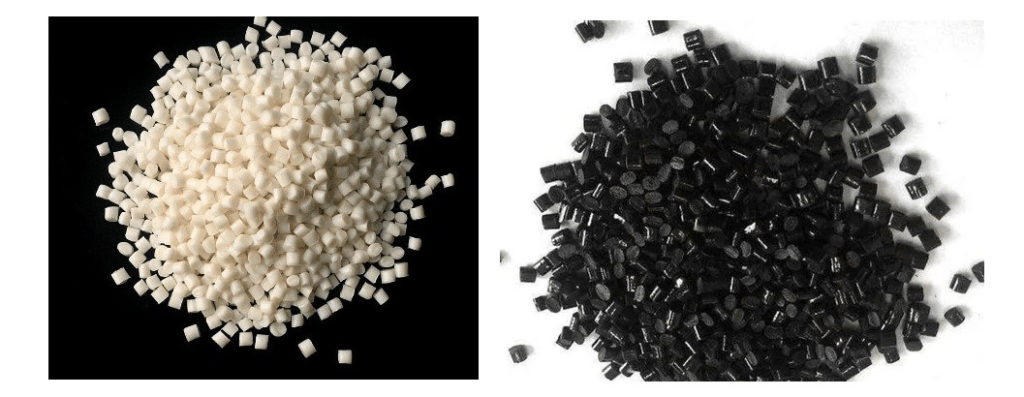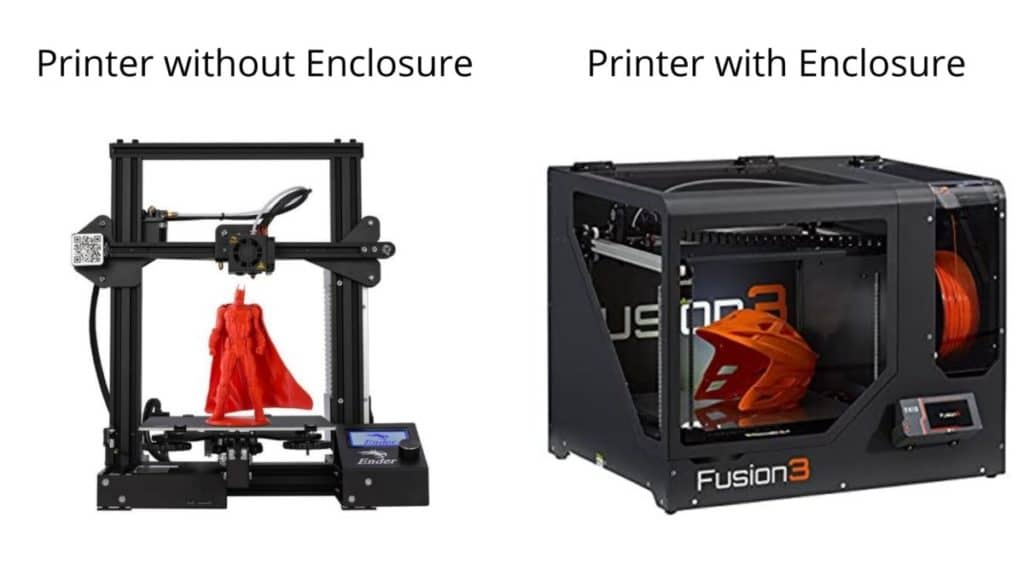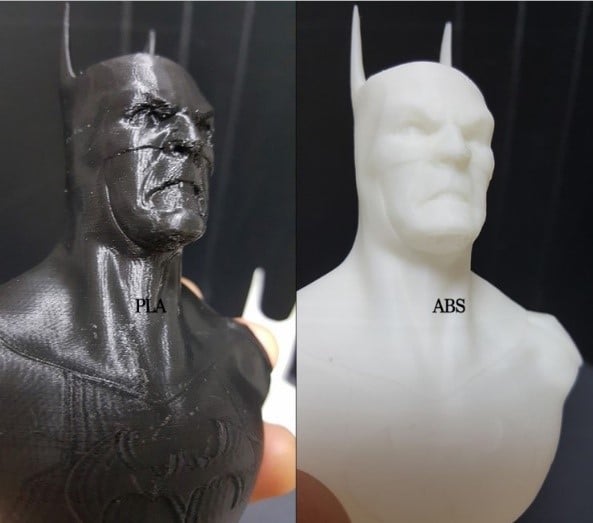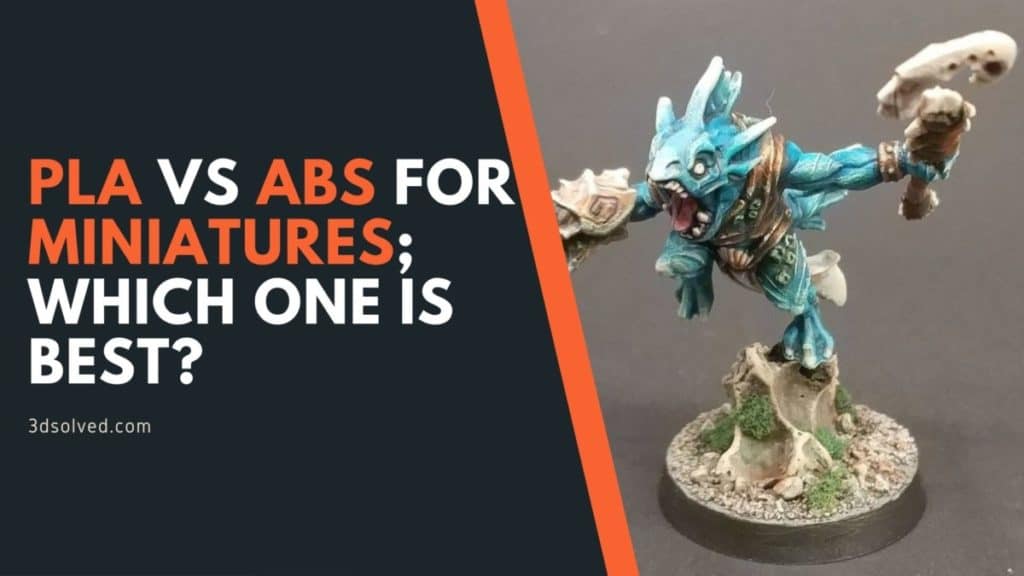3D printing has been growing in popularity over the past years and one of the types of models that 3D printers are used for the most are miniatures.
In this article, we are going to be comparing two of the most used filament types in fused deposition molding (FDM), which are PLA and ABS, and this should give you a better idea of which material does a better job at printing miniatures.
In short; PLA is better for printing miniatures in most cases because of how easy it is to print with since it doesn’t require the use of a heated bed or a high level of expertise. ABS, on the other hand, while it can yield higher levels of detail, requires more expertise to be printed properly and it generally suffers from warping.
Let’s get on with the rest of the post, shall we?
How easy is it to print with each filament?

For most beginners, I would recommend going with PLA in general, since it’s easier to print with because it has a lower melting temperature, which in turn means that using a heated bed may not be strictly required since warping isn’t so much of an issue when compared to ABS.
It’s also convenient to choose PLA since most affordable printers don’t include an enclosure, which means that more sudden temperature changes can occur, which won’t create as much of a problem with PLA when compared to ABS.
ABS, on the other hand, requires a lot of specific conditions to be met to be printed successfully, such as setting the bed temperature correctly as well as the extruder temperature, the printing speed, and more.
If the bed temperature is set too low, the model will, more often than not, suffer from warping, rendering the entire print useless.
This is why if you’re printing with ABS you should always be using an enclosed printer and pay special attention to the print settings.

On the other hand, it’s also worth mentioning that even though ABS may be harder to print with, the post-processing part is much easier than with PLA, which means that you will end up saving time if you know how to properly print with it.
And one last thing I wanted to mention, which doesn’t pertain to this article in particular but to 3D printing in general, is that you should also consider the environmental consequences of printing with PLA or ABS, since PLA is more eco-friendly.
What filament is cheaper to print with?
As I mentioned before, “ABS” requires special attention to be paid in terms of the printing settings, such as extrusion multiplier (flow rate), retraction distance, retraction speed, infill percentage, support & shield configurations, and the most important setting of all when printing with ABS, temperature.
Printing at higher temperatures will, over time at least, increase your electricity bill. It might not be too much if you’re just printing a couple of models every now and then, but in a “mass production” scenario, the difference will be quite noticeable.
Not only that, but since ABS requires so much more precision in terms of printing settings than PLA, and since it’s very susceptible to temperature changes, chances are that you’ll end up collecting a huge pile of failed prints much sooner than if you were using PLA. This means that you may end up spending more on the filament itself, even though 1Kg spool of both filaments costs roughly the same.
So, in short; PLA is more affordable, easier, and more convenient to print with.
Overall looks before postprocessing

As you can see in this image, “ABS” can oftentimes offer better detailing even before postprocessing, and this is due to the higher temperature needed for printing with ABS.
With PLA, on the other hand, it tends to suffer from low-temperature deformation and when the nozzle prints the new layer over the previous one, some details get deformed.
This is the case for PLA no matter what printer you use, be it with an affordable or a prosumer printer.
Post processing techniques
Depending on how good you want your miniatures to look, there are a couple of different ways you could approach this, but I will go straight to the point here; some post-processing methods entail sanding the model, vapor smoothing it, hydro dripping it, etc., however, the process you can use to get the best results is using an epoxy coating.
There are a variety of coating products out on the market that work pretty damn well with both types of filament, but for best results, I’d recommend going with this XTC-3D coating, especially when taking cost-efficiency into account.

To get a proper finish on your miniatures I’d recommend following these post-processing steps;
- Sanding with a 200 to 400-grit sandpaper.
- Use a Cloth with alcohol to clean the models thoroughly and let them dry.
- Apply an Epoxy coat.
- Paint with acrylic (not required)
- Use a spray coat protection.
Following these steps will help you obtain the best results in terms of preserving small details and smoother finishes, and you don’t require a deep 3D printing knowledge to do this either.
(Keep in mind that not all of the epoxy products work with both material types, which is why I’d recommend using the XTC-3D coating I mentioned earlier as it works with “ABS” and “PLA”)
Now, post-processing is definitely an important step, but getting the printing part right is even more important, so here’s a table with some information regarding both PLA and ABS temperatures, bed temperature, and more.
| Plastic | ABS | PLA |
|---|---|---|
| Print Temperature | 210 – 250oC | 180 – 230oC |
| Bed Temperature | 50 – 100oC | 0 |
| Print Difficulty | Hard | Easy |
| Use | Ideal for mechanical parts | Ideal for beginners |
| Properties | Durable, slightly flexible, somewhat brittle. | Highly durable, low flexibility. |
| Detail Level | High Level of detail even before post-processing | Lower level of detail |
| Eco-Friendly | Non Biodegradable | Biodegradable |
| Price | About $20 per 1Kg Spool | About $20 per 1Kg Spool |
Final Thoughts: PLA vs ABS for Minis
Ultimately, when it comes down to choosing PLA vs ABS for miniatures, your final decision will always depend on what you’re going for;
If you are a beginner who is just getting started on their 3D printing journey and you don’t care too much about getting the highest level of detail possible, or if you don’t want to create functional and mechanical models, then PLA is definitely the way to go.
In fact, in most cases I’d recommend PLA over ABS for miniatures simply for how easy it is to print with, meaning that over time you won’t be generating as much waste, resulting in less money spent, and you won’t get frustrated dealing with all the requirements associated with printing with ABS.
On the other hand, if you need a material that can withstand high levels of impact and that is also functional, ABS will be the better option out of the two.
Each filament has its own unique strengths that make it ideal for certain types of projects. If you are a hobbyist that just wants to print a couple of miniatures to be used for a game, then you should go with PLA most of the time.
Now, do you know about resin printers? because those are the ones generally used for printing miniatures since they are much more capable of printing highly detailed models and should also be considered.
I wrote an article comparing the costs between running an FDM printer and an SLA printer which I think that you should definitely check out as well!
I hope this information was useful!
Have a great day!
Check out our recommended products section

We created a recommended products section that will allow you to remove the guesswork and reduce the time spent researching what printer, filament, or upgrades to get, since we know that this can be a very daunting task and which generally leads to a lot of confusion.
We have selected just a handful of 3D printers that we consider to be good for beginners as well as intermediates, and even experts, making the decision easier, and the filaments, as well as the upgrades listed, were all tested by us and carefully selected, so you know that whichever one you choose will work as intended.

